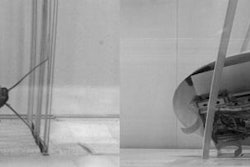The Internet of Things has been a major buzzword for many years now and much has been made of the operational efficiencies gained from IoT developments like autonomous warehouses and distribution centers.
While incredible, these solutions are focused on streamlining the post-manufacturing stage of a product once the item is already boxed up and off the line. A far less explored side of IoT is how it can also improve the actual manufacturing process.
New IoT-enabled manufacturing equipment is slowly emerging at factories across the globe, but the vast majority of machinery currently in use is either aging or already aged. Mass adoption of IoT-enabled machinery will remain a slow process, and the reason for this is simple: cost.
When it comes to upgrading machinery, companies face tremendous financial and opportunity costs that combine to create huge barriers to large-scale IoT adoption. Only 35 percent of U.S. manufacturers presently use connected sensors, and most of these early movers have retrofitted aged machinery rather than purchase new smart equipment.
The Prominent Benefit of Evolving IoT In Manufacturing
In many ways, manufacturing is still an old-school industry. There is a lot of running around, pen-and-paper record keeping and trial-and-error troubleshooting — especially in small- and medium-sized operations. IoT and smart manufacturing can improve all of these manual processes and generate transformative operational efficiencies.
By adding IoT sensors, cameras and gauges, as well as the software needed to view the data that’s collected, maintenance teams can keep tabs on equipment performance without ever stepping foot on plant floors. These solutions can send alerts at the very moment a machine or component shows the first sign of failing, whether through a change in pressure, temperature or vibration. Maintenance teams can then remediate the issue with minimal (or no) downtime.
There are already some great tools available for machine operators to communicate this information in near real time, but nothing can predict issues and limit downtime the way IoT solutions can. For every minute that a line is malfunctioning, businesses are potentially losing thousands in revenue. So while the upfront costs of an investment in IoT technology may be high, the potential savings from preventative maintenance outweighs them.
How IoT Can Change The Future Of Manufacturing
The number of benefits manufacturers will see from adopting connected technology is only set to grow. Here are the four main ways IoT will shake up the industry:
1. IoT For The Masses:
Thus far, only the biggest players in the manufacturing world have been able to reap the benefits of customized IoT solutions. However, like we saw with cloud infrastructure, IoT technology is bound to soon become ubiquitous and affordable. Platforms like AWS IoT are causing the cost barriers to crumble before our eyes.
Not long from now, even small-scale manufacturing operations will be afforded the same customized IoT opportunities as their multinational counterparts.2. Environmental Compliance
Global warming is something many believe to be the most pressing issue of our time, and the manufacturing industry’s emissions levels are under close scrutiny as the world seeks to slow down its changing climate. As regulations increase, the burden will fall upon manufacturers to report the preventative measures they’re taking within each of their individual factories.
Whether it’s reporting the least energy-efficient components on a line, identifying energy byproducts exceeding tolerable thresholds or delivering real-time information about material waste, IoT sensors and gauges will make compliance much easier for manufacturers everywhere.
3. Improving Output Quality
Connected sensors, cameras and telemetry don’t just report on abnormal machine operation — they also report on product variations and help boost the quality of finished products. With this information, machines further down the production line can be adjusted to resolve the issue and prevent the defective product from reaching consumers.
Better inline quality assurance will relieve stress from quality control departments, instill better confidence within the sales and distribution chain, and ultimately improve relations with end consumers as well.4. Increased Business Intelligence
It’s one thing to get your machines connected and collecting data, but understanding that data is something else entirely. Executives who have invested in customized intelligence software are also learning how to make meaningful productivity decisions based on their data, finding faster and cheaper methods to produce superior products.
This trend is set to continue, and in the coming years, you can expect to see rapid growth in software and mobile products aimed at delivering actionable data to upper management. By speaking the user’s language and making IoT relatable, these software advancements will only further accelerate adoption across the whole industry.
IoT technology is set to revolutionize how manufacturers operate to an extent that hasn’t been seen since the first mechanized assembly lines were introduced. By improving product quality and driving operational efficiency, the ongoing benefits will be enormous.
About The Author: Joe Ryan is the COO of Skookum, a custom software design and development firm with offices in Charlotte, North Carolina and Denver. He oversees the company’s services department and is responsible for optimizing the company's service delivery model. Joe has 10 years of software development experience, and he formerly served as Skookum’s managing director and held management positions in quality assurance and product management.
(Cover image: AP Photo)






















